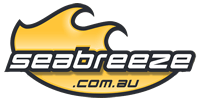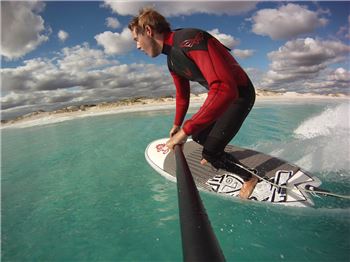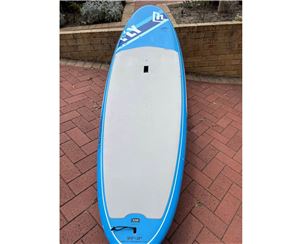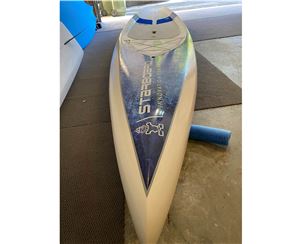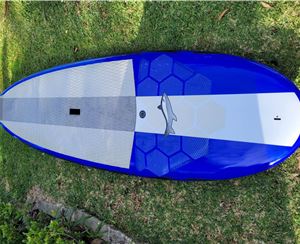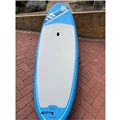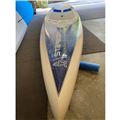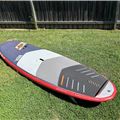Stand Up Paddleboard Racing
 In its latest incarnation, stand up paddleboarding is a pretty young sport - at the start of the decade SUPers were a pretty rare sight, and the idea of there being different disciplines or even a variety of board types would have been pretty crazy.
In its latest incarnation, stand up paddleboarding is a pretty young sport - at the start of the decade SUPers were a pretty rare sight, and the idea of there being different disciplines or even a variety of board types would have been pretty crazy.
Skip forward 10-years and stand up paddleboarding is a phenomenon, and undoubtedly one of the fastest growing sports in the world. And with its increased popularity, the sport has also diversified.
Driven partly through personal preferences (surfers using stand up paddleboards in the surf on days when it's too small for their shortboard) and partly through circumstance (landlocked river cruising paddleboarders), there are now several distinct style of stand up paddleboarding.
Racing is probably the fastest growing discipline of all. The fact is that it's incredibly easy to start a club or to organise SUP races - there's no need for a clubhouse or somewhere to store kit, it's a great social activity, and all you need is, well, water! Plus it's a great social activity, a great excuse for a few beers after the event and, hey, everyone likes to win races!
Getting started
Here we're going to take a look at some of the current 'classes' for racing, some of the types of race and some of the kit that should see you heading up the pack as you begin sprinting for the finish line...
Classes
With the speed at which racing has taken off, suggestions that it could be heading for the Olympics within the next decade or so don't seem misplaced. If it reaches this stage then, as with windsurfing or sailing, there would have to be clearly defined and regulated 'one design' boards.
For now though, the sport has - over the last five years or so - self-categorized itself into three distinct classes. Shapers have been quick to recognise these 'unoffical' classes too and there are now numerous production boards geared towards racing within these classes. So, although you may see some variation from country to country (or club to club!), at most race events you'll normally find something along these lines:

12'6" Class. This class allows any board under 12'6" in length. In reality, as most racing specific boards are over this length, it's a class designed for most stand up paddlebaorders who own 'all round' boards to enter.
You'll see people racing on any number of boards, such as the Starboard Blend, or the Coreban Cruiser. Of all the classes this is generally the least competitive and a great place to start out of you think that racing could be for you, or if you just want to have some fun and a great workout.
14' Class. For boards up to 14'. There are numerous production ace-specific boards up to 14' in length and this class is aimed at these riders. This is a 'serious' class, where riders are more likely to specialise in racing rather than all round stand up paddleboarding.
There can be different regulations in this class as to whether you are allowed to have a rudder on your board in this class. In reality most 'shorter' race boards are rudderless.
These boards have the distinctive 'look' of race boards - pulled right in at the nose and the tail and with minimal rocker, but you'll find various options in terms of hull shape (this is where it starts getting a bit more complicated!).
Unlimited class. For boards over 14' in length. This class is for highly efficient race-specific machines - the F1 of SUPing! You can expect stand up  paddleboards which look more like small kayaks or Olympic rowing sculls, and expect to be hitting up the credit card if you really want to be up to pace.
paddleboards which look more like small kayaks or Olympic rowing sculls, and expect to be hitting up the credit card if you really want to be up to pace.
These are serious boards and can travel at great speeds, many have rudders to enable riders to trim the board and paddle even strokes on each side even when the wind or swell is trying to push you off course.
This is currently the most technically innovative area of the world of stand up paddleboarding with various schools of thought around optimum length, most effective hull design, and a hundred and one other highly technical considerations that could fill an article much longer than this one!
This is likely to become the first area of the sport to begin demanding more restrictive generic 'one-design' stand up paddleboards so that everyone's on the same kit and there's no real technical advantage. (To really sort out the men from the boys!)
Type of racing
A significant contributing factor to stand up paddleboard racing's increasing popularity is the fact that you can choose where to race, how long to race, and can easily have different courses to suit different riders.
To borrow a phrase from a popular film: "the first rule of SUP racing is there are no rules, the second rule etc etc..." If you've got an island - go round that, if you're on a river - then pick a spot upstream, if you're on the open sea then chuck out a buoy or park up a RIB for people to go round.
As time goes on there will surely become more recognised 'distances' (with sprint style events as well as long-distance/marathon style events).
For now, anywhere between 5 and 10k is standard for an 'elite' race. This year's Battle of the Paddle in Hawaii had a 5 mile course, which took in 19 buoys and two 75 metre beach sprints (trying to either make use of or avoid the Hawaiian surf!), so courses can be as varied and as complex as required.
